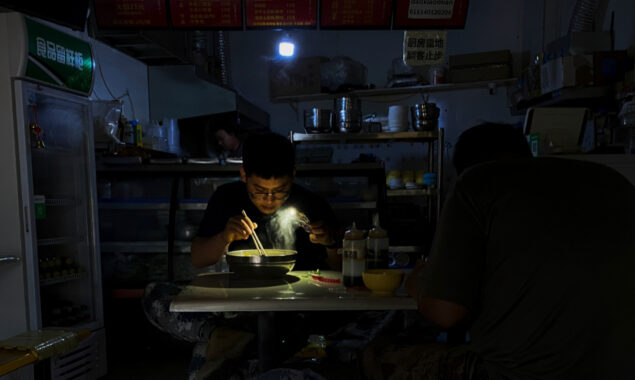
A man uses his smartphone flashlight to light up his bowl of noodles at a restaurant during a blackout in Shenyang in September 2021: China is not the only one capable of making mistakes.
- A number of countries in Asia are experiencing their greatest energy crisis in years.
- There is also growing unrest and instability due to the rising cost of living.
- Even relatively wealthy nations such as Australia are feeling the squeeze of increased energy costs.
- The Australian government has suspended the national electricity market indefinitely.
Asia: In Sri Lanka, residents wait for kilometers to fill their gas tanks. The businesses in Bangladesh close at 8 p.m. to preserve energy. In India and Pakistan, catastrophic heat waves with temperatures over 100 degrees Fahrenheit are accompanied by power outages that close schools, and businesses and leave inhabitants without air conditioning (37 degrees Celsius).
These are just a few of the most arresting scenes occurring in the Asia-Pacific region, where a number of countries are experiencing their greatest energy crisis in years, as well as growing unrest and instability due to repercussions of the rising cost of living.
Read More: Voestalpine of Austria stores gas to ensure winter supply
Sri Lanka and Pakistan are experiencing a distinct feeling of catastrophe. The wrath of the public has already led to the resignation of a number of ministers in Colombo and contributed to Imran Khan’s removal as prime minister in Islamabad.
Nonetheless, many believe that the political reckoning has only just begun; both countries have been forced to take drastic measures, like turning to the International Monetary Fund for assistance and instituting shorter workweeks to conserve energy. Prime Minister Ranil Wickremesinghe stated on Wednesday that the Sri Lankan economy has “totally collapsed.”
In other parts of the region, the symptoms of instability may be less apparent, but they might still have far-reaching effects. Even in relatively wealthy nations such as Australia, economic concerns are emerging as consumers feel the squeeze of increased energy costs.
In the first quarter of 2022, wholesale electricity prices increased by 141 percent year-over-year; households are being urged to reduce usage, and on June 15 — for the first time — the Australian government suspended the national electricity market indefinitely in an effort to lower prices, relieve pressure on the energy supply chain, and prevent blackouts.
Read More: EU leaders are suspicious of US plan to control price of Russian oil
However, the experience of India, where power demand has recently reached record highs, best demonstrates why this is a global rather than regional crisis.
The world’s third-largest carbon emitter announced on May 28 that state-run Coal India will import coal for the first time since 2015, following widespread outages and record temperatures.
Read More News On
Catch all the Business News, Breaking News Event and Latest News Updates on The BOL News
Download The BOL News App to get the Daily News Update & Follow us on Google News.




